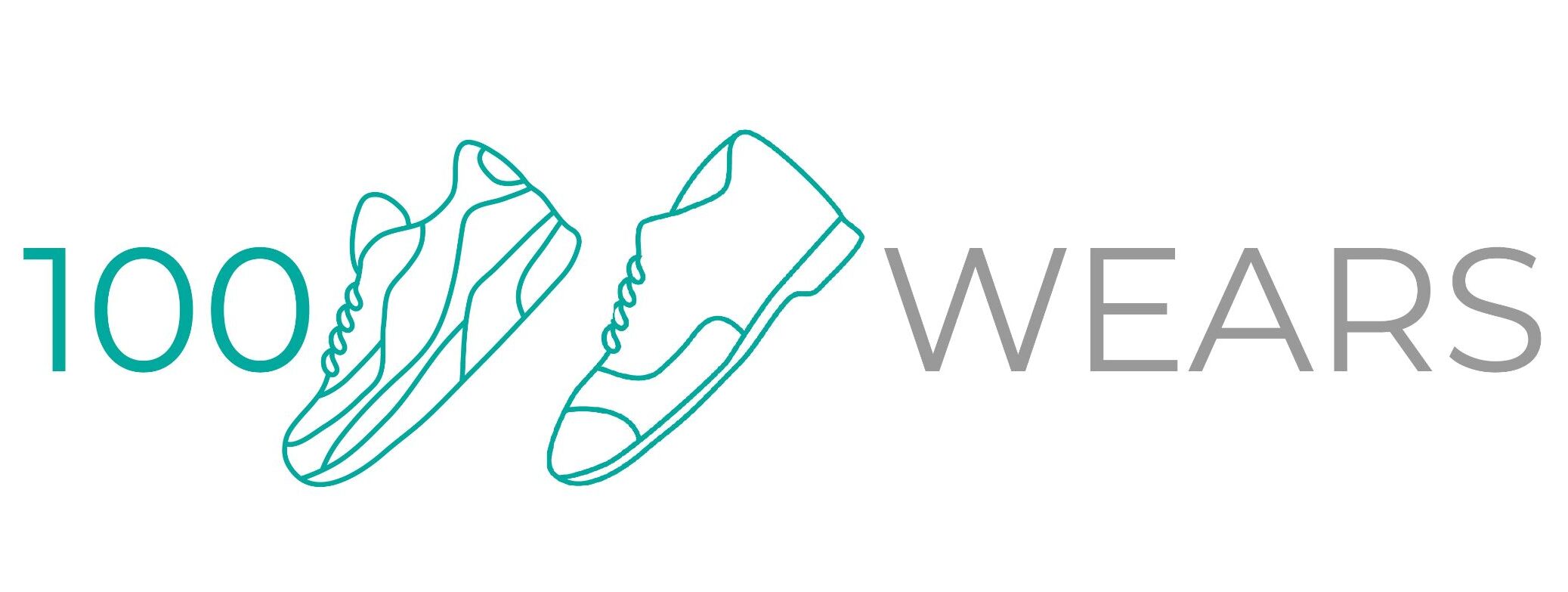Viberg Shinki Service Boot: Shell Adjacent
Price: $915 [Camel Color]
Why Buy?
The Viberg Shinki Service Boot offers a really unique leather that is tough, along with being very well made.
Why Avoid?
The Viberg Shinki Service Boot costs more than just about anything else out there, and sizing changes from run to run.
Specs
| Model | Service Boot |
| Height | 6″ |
| Size | 11.5 E |
| Weight | 967 g / 2 lb 2.1 oz |
| Materials | Horsehide / Rubber Outsole |
| Construction | Stitchdown |
| Country of Origin | Canada |
History

The History of the Viberg Service boot is long and storied, but has been told here and other places before. No, today I’d like to talk a little bit about the Shinki horse hide that makes up this leather. Shinki – or Shinki Hikaku Tannery if you’re looking to be formal – focuses solely on horsehide. In fact, at least according to them, they are the only tannery that focuses entirely on horse leathers. It’s fair to say they know a bit about what they are doing.
Located in Hyogo Prefecture, in the city of Himeji, the tannery might not be as old as you’re expecting. Founded in 1951, there are people wearing their leather that are older than the company. However, despite that, their specialization means that they have developed a number of unique ways of creating leathers.
The Leather

One of the most interesting is on this pair here – their Oiled Horsebutt Leather. Similar leather is often referred to as “shrunken” horsebutt, which might give a bit of insight into how it’s made. Unlike most other horse leathers, this particular make up is made in basically the same way they make their shell cordovan.
More specifically, the leather on these boots take a full 10 months to tan. That is nearly 10 times as long as the most recent outed British prime minister. During that process, the hide itself shrinks significantly compared to other ways of tanning, giving that classic Shinki pattern. It also means that there is simply less of it compared to other methods.
It isn’t just the tanning process that makes this rare. On this hide, Shinki leaves the shell. In other words, (most) of the boot has both a shell and hide layer – talk about tough. It is worth noting that when manufacturers talk about shell-in horsehide, it isn’t entirely shell. There are portions without it.
Why would you want something like this over pure shell? Well, let’s dive in and find out.
Disclaimer: These boots were purchased at Viberg’s Sample Sale. They are listed as seconds; however, I was not able to find any reason why. That being said, in the interest of fairness to Viberg, I wanted to share this in case there is a minor issue I didn’t even think to mention that is visible in the pictures.
Looks
Upper

The upper of the Viberg Service Boot in Shinki is really something special. I just spent 400 words diving into the leather, but I’m going to take a few more here. Covered in unique texture, it manages to be both in-your-face, but still subdued at the same time.
It should be said, though, if you like pull up this is not the leather for you. While I have no doubt it will patina due to it’s veg-tan nature, you’re not likely to get highlights and lowlights. Instead, expect the scrapes and stains you pick up to tell the story instead.

When it comes to the rest of the upper, there really isn’t anything to complain about. The stitching is clean, the toe caps are straight, and the antique brass rivets are well placed. Inside, the unlined shaft has a faint nap (which will come off on your socks the first few wears), and an ungusseted tongue. If I could waive a magic wand, I’d get a gusseted tongue in a thinner/softer leather, but not a huge deal.
Really, the only complaint I’ll make is the shape of the upper is particularly plain. One of the big draws to me for the Viberg brand is the curved style of the boot – the heels, the vamp, the toebox, etc. This pair really isn’t. If I had to guess, the leather is probably just not that well suited for it. I imagine it’s quite hard to shape over the last.
Mid and Outsole
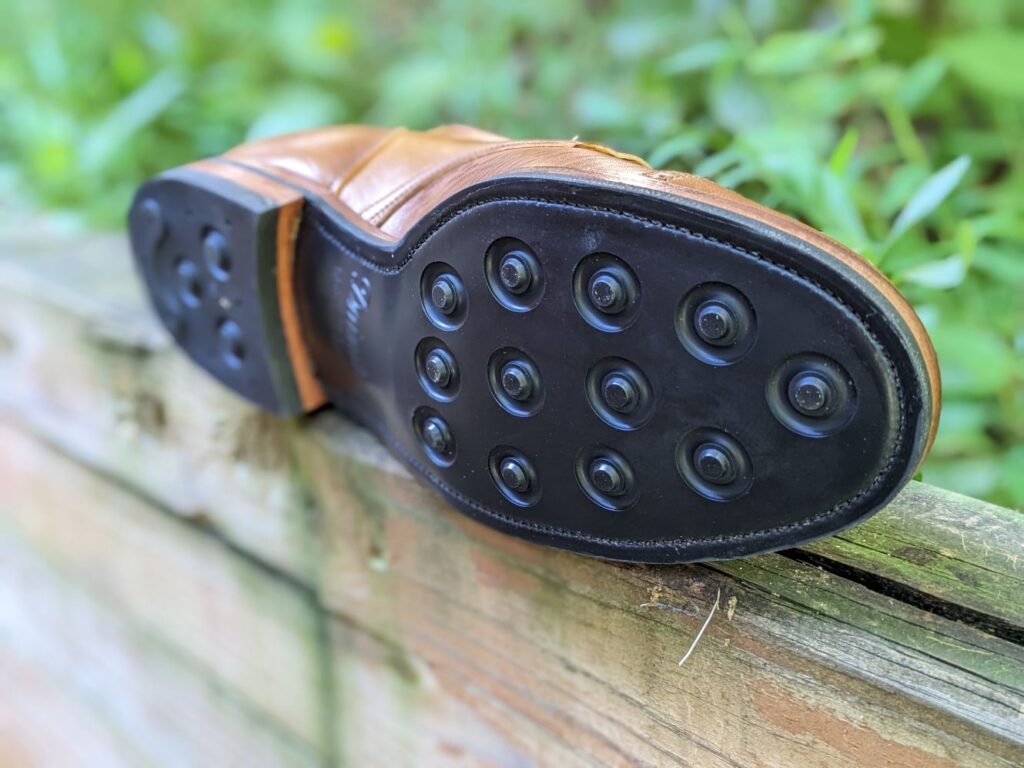
The mid and outsole on this Viberg Service Boot in Shinki is about as classic Viberg as it comes. A stitchdown with double rows holds the upper to the leather midsole, and the whole thing is finished off with a black Dainite outsole. A heel block completes the package.
With it being so standard, there isn’t a whole lot to talk about here, but I do want to flag a few things. First, while not quite a fiddleback, when Viberg wants to add a third dimension to their outsole, they sure do knock it out of the park. Under the mid foot is an incredibly appealing curve around the shank.

Next, this boot was made when Viberg was going through their “the smaller the stitching, the better” phase. While it is no doubt more technologically impressive to install their mid and outsole with such tight stitching, it isn’t my personal favorite look. I’ve seen it described as baby teeth, and it’s hard to say I disagree. I think others have come to the same conclusion, because Viberg changed back to a wider stitch not long after this boot was made.
Still, other than a bit of rough finishing along the heel on the right boot, there isn’t anything to really complain about.
Summary

The Viberg Service Boot in this Shinki Oiled Horsebutt leather really does feel like something special. The leather is obviously the star of the show, but it impressed me in ways I wouldn’t expect. I’ve had shell-in horsebutt before, but it’s always been Horween’s version and extremely casual. Great leather, but strictly for the weekends. At least in my line of work.
These boots can do the business casual look so much better. That isn’t to say they are the best option for it – the leather texture and large eyelets skew casual – but if you find yourself needing to run to a meeting and these are in your car, you’ll be OK.
This sort of just-under-business-casual vibe works well with everything from dark denim to chinos, and t-shirts to oxfords.
Fit & Comfort
Fit

The Viberg 2030 last used in these Shinki Viberg Service Boots is one of the most frustrating boots to fit. Not because the 2030 itself is problematic, but because there are just so many darn versions of it. Depending on which variant they use, I can fit into an 11, an 11.5, or a 12. In this particular pair, I found an 11.5 to be the best fit.
No matter which option you pick, the 2030 last is very long and wide for the stamped size, and wide even for the adjusted size. The standard width is an “E,” and only certain models come in D or EE. Certain versions can have a fairly aggressive toe taper, but this one isn’t one of those. No, this version, often semi-affectionately called the “sausage 2030,” is much more of a standard boot shape.
I would suggest taking a half size smaller than your typical boot size as a starting point, but I would strongly suggest only buying a pair you can either try on or get easy exchanges.
As mentioned above, I wear these in a size 11.5 E. For reference, I wear a 12 D in almost every other piece of stitched footwear, and a size 13 in most sneakers. For a full list of sizing for every shoe reviewed on this site, click here.
Comfort
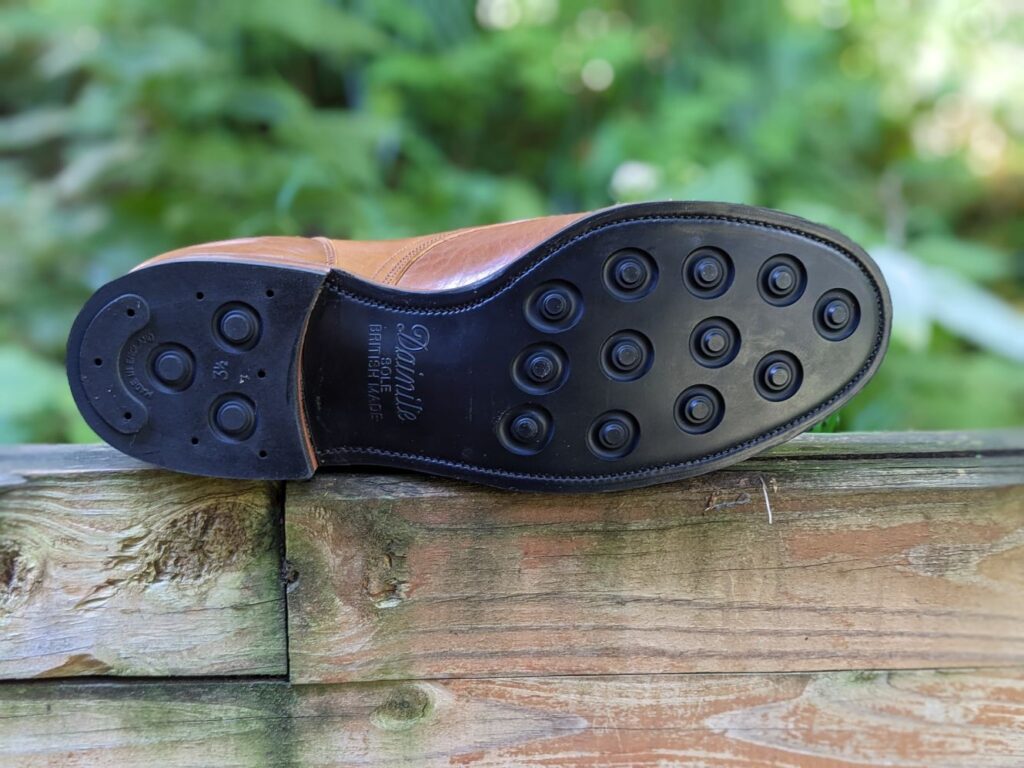
Comfort is pretty much the only place where the Shinki version of the Viberg Service Boots really has a drawback. Veg tanned leather is stiff. Horsebutt is stiff. Shell is stiff. Shrunken leather is stiff. A shrunken, veg-tanned horsebutt with the shell still in is the stiffest boot I’ve ever owned. While I have no doubt this is going to be super tough stuff, that doesn’t align well with comfort.
To be clear, it isn’t thick, so it’s still bendable, but stiff none the less.
I’m sure that with some wear they will soften up a bit, but I have my doubts they will ever get to “buttery.” Not everyone wants a super soft boot, but if you do, there are other options that will fit the bill better.
When it comes to the outsole, I personally find Dainite outsoles very comfortable. Combined with the leather midsole, they will take the shape of your foot and be plenty flexible. I will add, though, that I might be in the minority here. Plenty of people absolutely hate Dainite, saying it’s hard and slick.
Materials & Construction
Materials

I’ve talked a lot about the leather on this Shinki Viberg Service Boot, so I’ll skip that here. The good news is that the rest of the materials on the upper don’t disappoint. The eyelets are real metal, the stitching is a great thickness, etc. At the toe and heel, Viberg uses leather stiffeners.
It’s mostly the same on the bottom half of the boot. The majority is just two materials – leather and rubber. In addition, there is a multi-ridge metal shank. The one remaining item is one that always sparks a bit of controversy. To fill their void, instead of leather or cork, Viberg uses a high-density foam. The owner of Ostmo boots cut a pair up and didn’t have any problem with it, and if he is OK, I’m OK.
Construction
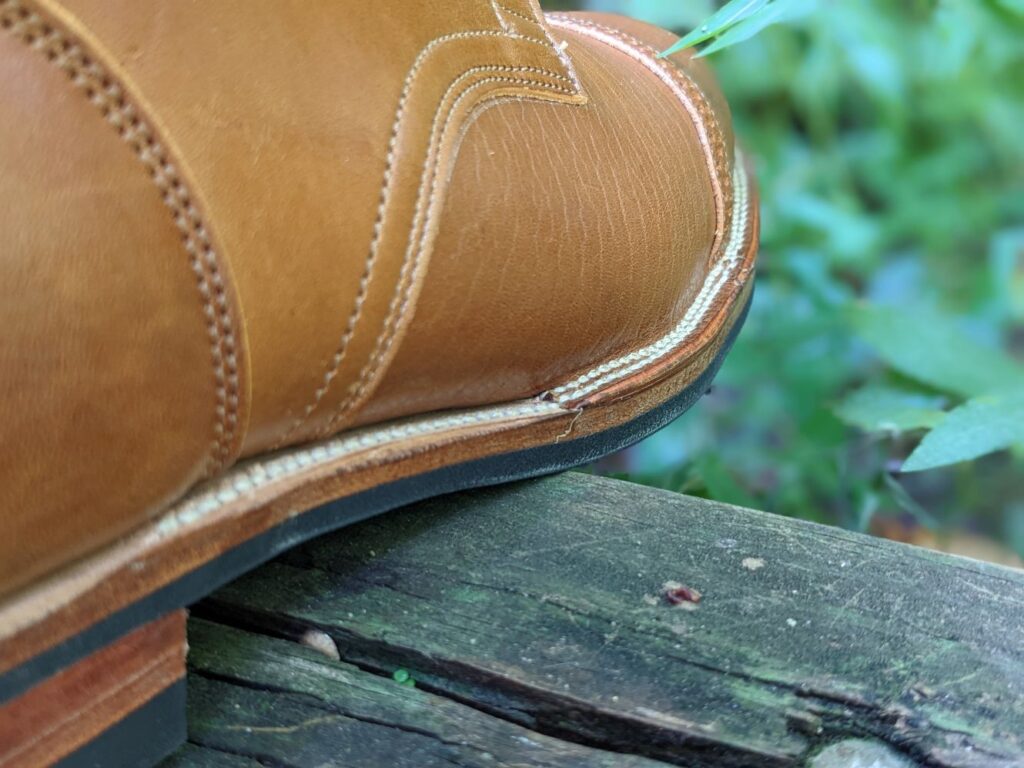
Viberg is probably the most well-known stitchdown boot maker, so there is no surprise that this Viberg Service Boot in Shinki uses their traditional stitchdown construction. If you want the long version, click here. The short version is that for this type of construction, the upper leather is spread out, and sewn directly to the midsole and outsole in two rows. On higher end boots, such as this one, the upper is foled in at the back and nailed down through the heel.
Stitchdown is a resoleable form of construction, though it is harder to do than a goodyear welt. While it’s true that a master craftsman can resole a stitchdown as many times as the GYW version, the reality is that most cobblers will miss a stitch or two. This ends up wearing out the upper and limiting the number of resoles. That risk during resoles is the major drawback, with the risk of damaging the upper by accidentally cutting the edge being the biggest minor one.
On the plus side, Stitchdown is one of the most waterproof ways to build a boot – with no risk of internal stitching being exposed to water there is less risk of failure. The biggest reason for its rise in prominence though is that it just looks cool. When you think of a chunky hard-wearing boot, you probably think of stitchdown.
Ease of Care
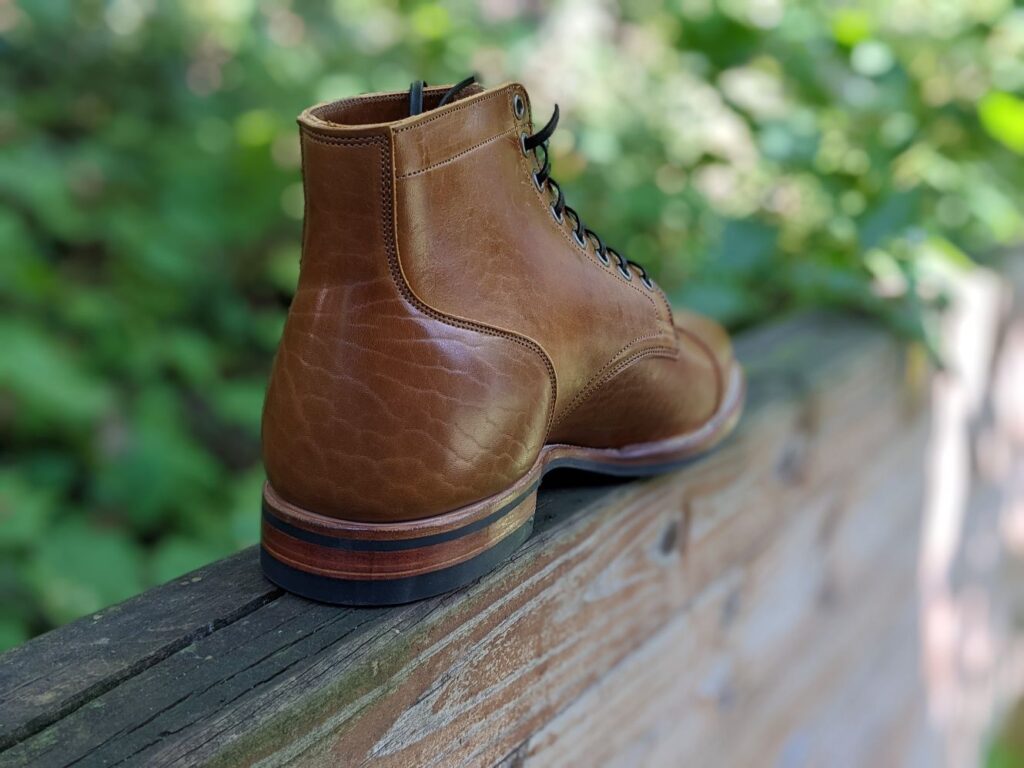
In general, horsehide needs a bit less maintenance than cow hide. If you condition your cow boots every 4 months, you can maybe go 5 or 6 in these. All that being said, if you follow the same procedure you do for your other boots, you’ll be fine.
When it comes to conditioner, unless your boots are completely dry, I suggest Bick 4. For typical, every day use, it does just as good a job as anything else and tends to be a bit more affordable. I should note that Viberg themselves recommend Venetian Shoe Cream, and it certainly won’t hurt to use that instead if that is your preference.
Of course, you’ll want to make sure you always use shoe trees. Viberg’s option are surprising affordable compared to most things on their site, though it really only makes sense if you’re buying the boots from them as shipping is 50% of the price of the trees. Alternatively, you can check Amazon for even more affordable options, with free shipping.
Pricing & Value
Pricing

Originally priced at $830 (plus a mandatory $25 shipping fee), the Shinki Horsebutt Viberg Service Boots have since gone up to $915. (Olive, Camel) Personally, I picked these up from the Sample Sale for $500.
This price puts them at about a $70 premium over their other horsebutt offerings.
If you’re trying to find this look but looking to spend a bit less, there are a few places you can try. Of course, if you just want a pair of Vibergs, their chromexcel version comes in at around $700. You obviously lose out on that really cool leather, but you’ll still get a great pair of boots.
If the texture is something that you’re looking for, another option is bison leather. It’s not quite the same as the Shinki, but it will give you a more interesting look. Grant Stone’s Diesel Boot can be had for less than half the Viberg.
Value

It’s important to keep things in perspective here. More than $900 is a lot of money for a pair of boots. The Viberg Service Boot in Shinki Horsebutt is expensive. Heck, even seconds at their sample sale costs more than most brands maximum price.
At the same time, it isn’t impossible to justify the cost. It really has to do with that leather. As much as we all hate it, $900 for a pair of shell boots is starting to become the norm. Alden, White’s, and more are all about there or higher as of 2022. For Viberg, shell regularly hits $1,500 with shipping and tax!
The question I would ask – what makes a pair of shell cordovan boots that much different than this pair?
The man hours to make the leather? Nearly identical. The amount of leather per animal? Sure, you get a bit more this way, but only slightly. The durability? This horsehide makes it significantly more durable, and is easier to take care of.
No, other than the look of cordovan (which, to be fair, is nice) and the time shaving down the hide, these give you all of the tangible benefits. If durability, labor time, etc. are what matter to you, it isn’t hard to say you’re getting a bargain.
Wrap Up

The Viberg Service Boot in Shinki Horsebutt is an expensive, rare, and awesome boot.
Is it perfect? No. It’s a bit of a blob when it comes to shape, and a lot of people won’t like the Dainite outsole. It’s also more than $900 dollars. You could literally buy an Alden Indy and a Grant Stone Diesel for this price. You could foster 18 baby elephants. That’s a lot of money.
At the same time, unless you’re looking for something extremely specific and niche, what more could you ask for? This boot literally does it all, and then some. If your budget allows, I don’t think you’ll be disappointed.
